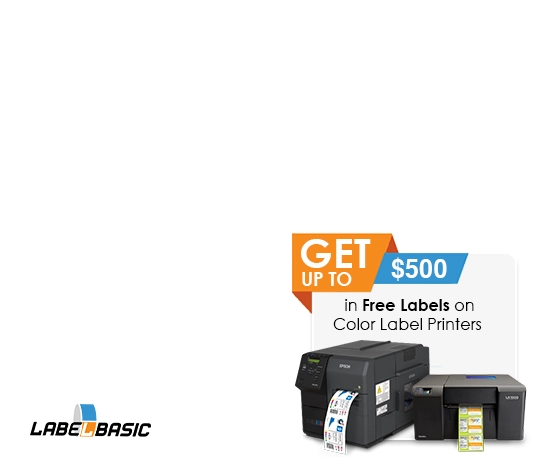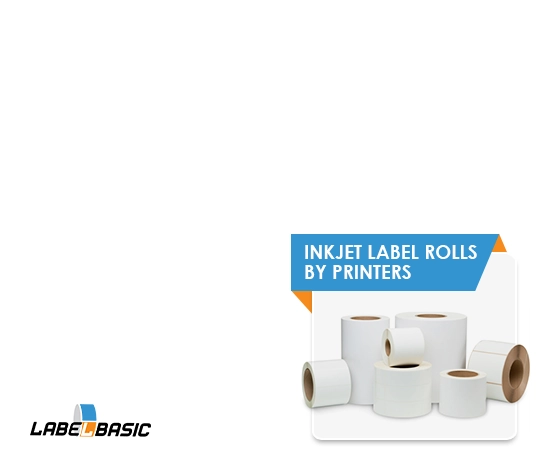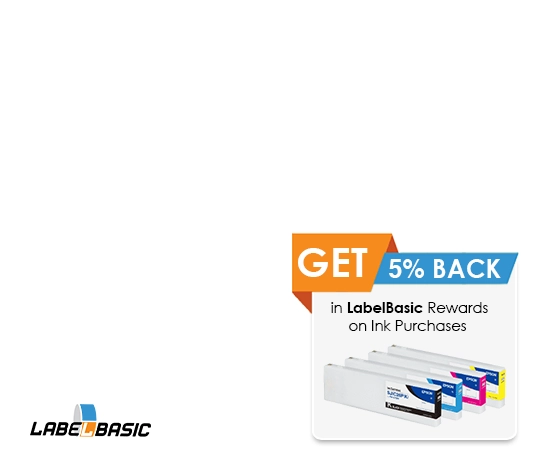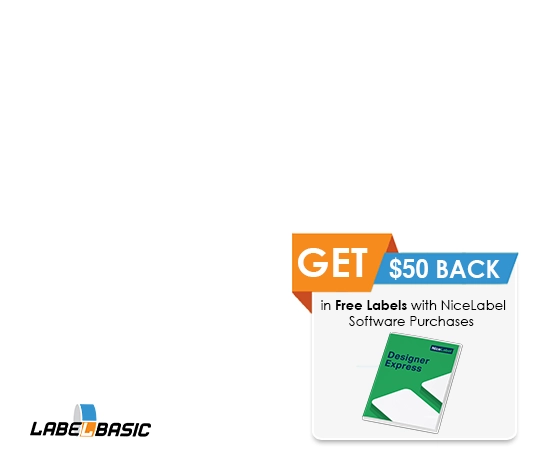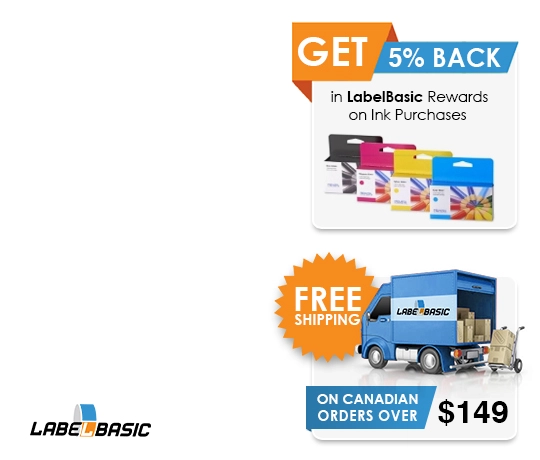It’s vital to purchase the correct size label for your printer. If the label roll doesn’t fit in the printer, you won’t be able to print on that label roll and may require an external label unwinder.
Size
When purchasing label rolls, you want to make sure that the inner core can fit in the printer as well as the outer diameter. While each printer has different requirements, we manufactured our label rolls to have the maximum capabilities with the leading printer brands on the market.

Our mini-sized label rolls are great for the Epson TM-C3500, Primera LX500, and Primera LX500c printers. The Standard Size Rolls work with the Epson TM-C7500, Primera LX900, LX2000 and all models of the Afinia Printers.
Material
Polypropylene Labels are also known as BOPP Labels (Biaxially Oriented Polypropylene – essentially a plastic-based label) are ideal for labeling products that require extra durability. They are water-resistant, UV fade resistant, oil resistant, heat resistant and abrasion-resistant, making them truly durable for products from the health and beauty, beverage, or industrial application needs. They also last well on products that will be used outside.
Glossy Labels are paper-based labels using a sleek, shiny and bright white coating. The general-purpose, permanent adhesive adheres attractively to cardboard, metals and most plastics. They reflect light and aid colors pop. Gloss labels are popular for their polished and professional look.
Matte Labels is a quick and easy way to label your products while customizing each label manually with a date of production, best before, or flavor or scent categorization. These labels also offer the most ‘organic’ look and feel as they have no gloss and are appropriate for products that have a ‘natural’ positioning such as certain foods and beauty products.
| Matte Labels | Gloss Labels | Matte PP Labels | Gloss PP Labels | |
| Material | Paper | Laminate Paper | BOPP | BOPP |
| Finish | Matte | Glossy | Matte | Glossy |
| Adhesive | Permanent | Permanent | Permanent | Permanent |
| Reuseable | No | No | No | No |
| Water-Resistant | No | Yes | Yes | Yes |
| Stock Color | White | White | White | White |
| How to Order |
Printing Compatability
Inkjet printers are able to print from two inkjet printing technology, pigment ink, and dye ink. Some printers are limited to only one printing technology while, other printers can print both. Depending on what qualities you are looking for in a label, it may make sense to factor in the printing compatibility.
Pigment & Dye inks
When printing with dye ink, the molecules spread out uniformly on the label. Dyes are sensitive to moisture and light, and therefore dye-based inks should sometimes be avoided depending on the job. The durability of these prints can be reduced in more rugged usage.
Pigment-based inks contain organic molecules encapsulated in a synthetic resin before being placed in suspension in a liquid. Pigment inks molecules are more abundant and better resist external forces such as light and ozone moisture than dye inks.
Quality
The initial print quality between dye and pigment is virtually the same. Both the vibrancy and color reproduction look very similar. It is hard to tell the difference between dye and pigment ink when comparing quality not looking side by side. However, there are some differences:
- Printers using Pigment Ink doesn’t print well with Glossy Polypropylene labels
- Gloss – the dye maintains a glossier finish than the Pigment
- Vibrancy – the dye ink looks slightly more vibrant/rich than the pigment ink.
- Solid Black – Pigment ink produces a truer black than dye. Dye has a slight magenta hue.
Keep in mind that over time especially when the label is exposed to UV light such as sunlight, the pigment ink holds its color, quality, and vibrancy better than dye.
UV Resistance
All inks over time will fade, whether dye or pigment. Dye ink, generally, is recommended for indoor use on products that will be consumed in less than 12 months. Pigment ink is recommended for products with a long shelf life. If exposed to direct sunlight daily, dye inks will start to fade quickly.
Typically, pigment ink has superior UV resistance. It is usually used for many years of indoor use or up to 24 months of outdoor life is required with little fading.
